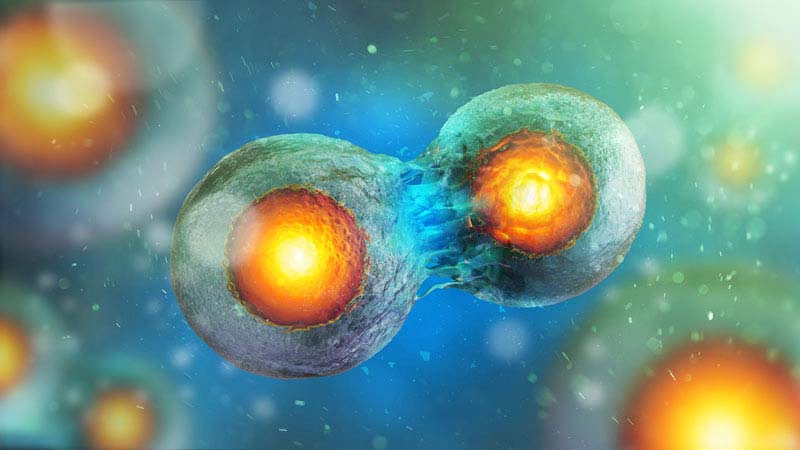Resource • Article
The Current Standing of Research on Stem Cell Therapies for Wound Healing

Wound healing is a complicated and dynamic process that includes multiple overlapping phases. Adequate wound healing is crucial to avoid risk of infections, prolonged hospitalization, and poor
quality of life.
Despite advances in wound care, chronic wounds heal slowly, if at all. Current treatment involves long hospital stays and long-term care. Wound-related treatment and associated complications costs the United States healthcare system $20 billion annually.
To control costs and improve outcomes for wound-care patients, researchers are turning to regenerative medicine; specifically, stem cell therapy. Similar to its potential to treat conditions
such as diabetes, osteoarthritis and traumatic brain injury, stem cell therapy for wound healing takes advantage of stem cells’ ability to renew and divide into multiple cell types to rebuild damaged tissue.
Why wounds are a chronic problem
Trauma such as deep punctures, burns, and lacerations cause acute wounds that affect
the skin. Most of the time, they result in a scar. Occasionally, a wound is too deep to heal naturally and requires treatment such as a skin graft.
Chronic wounds include diabetic foot ulcers and pressure ulcers. Chronic wounds require
more involved care, as the patient usually has an underlying condition that impairs healing. For example, high blood sugar and obesity impair wound healing. Also, the loss of skin strength and elasticity, combined with decreased blood flow and a lower reservoir of stem cells found make pressure ulcers harder to heal in older adults.
Current wound treatments include antibiotics, skin grafts, compression therapy and revascularization of ischemic limbs. Using these treatments, chronic wounds heal slowly. For example, the average hospital stay for a patient with a Stage III or Stage IV diabetic ulcer is 37.8 days.
Types of stem cells
Stem cells currently used for therapy include embryonic stem cells (ESCs), induced
pluripotent stem cells (iPSCs), and adult stem cells. Although ESCs and iPSCs have shown healing potential in various preclinical studies, their clinical implications are limited because of ethical concerns such as tumorigenicity and reprogramming issues.
A 2011 study in Nature, for example, showed iPSC stem cells—adult cells de-differentiated into an embryonic-like state—have spots in their genomes that are not completely reprogrammed. The research demonstrates iPSC cells require more analysis than ESCs before use in therapy.
Adult stem cells, however, make ideal clinical partners due to their immune compatibility and fewer ethical constraints. Adipose-derived stem cells (ADSCs), or cells derived specifically from fat tissue, are one of many adult stem cells. ADSCs play a vital role in the repair of skin wounds because of their lower immunogenicity and abundance in tissue samples.
Mesenchymal stem cells (MSCs) are a type of adult stem cell found in bone marrow, adipose tissue, nerve tissue, umbilical cord blood, and the dermis layer of the skin. MSCs are self-renewing and are capable of dividing into skin cells.
How stem cells help wound healing
Physicians often use skin grafts—placing the patient’s own tissue onto the wound site—to promote healing and to provide a protective barrier. Allografts, which are harvested from other donors, provide a barrier for about a week to promote healing. Engineered skin substitutes show
promise, but they’re not widely used due to cost and mixed effectiveness.
Stem cells may offer an advantage over engineered skin substitutes because of their ability to help create skin components that engineered skin substitutes cannot, such as sweat glands and
hair follicles.
Multiple studies on mice have shown MSCs enhance wound healing by accelerating wound closure rate. Studies have also shown MSCs help to control inflammation, which is necessary for wound healing.
A study out of Slovakia’s Institute of Medical Biology and Genetics tested the effect of skin grafts in combination with MSCs for non-healing diabetic ulcer patients. Researchers found the wound steadily decreased in size and increased dermis vascularity and thickness after 29 days of the combined treatment.
ADSCs have been shown to enhance regeneration of endothelial cells, which line the interior surface of blood and lymphatic vessels, resulting in the formation of new blood vessels and increased blood flow.
ADSCs also promote proliferation and differentiation of fibroblasts—a connective tissue cell that produces collagen and other fibers—in injured wounds, as well as inhibit hypertrophic scarring.
What else can ADSCs do? They secrete a variety of cytokines, growth factors, and chemokines to regulate new blood vessel development and immune responses, which ultimately promotes tissue repair.
A 2014 review of ADSC’s role in wound healing, said “the abundant supply of fat tissue, ease of isolation, extensive proliferative capacities ex vivo, and their ability to secrete pro‐angiogenic growth factors make [ADSCs] an ideal cell type to use in therapies for the treatment of nonhealing wounds.”
Although ADSCs show promise in skin wound repair, results from animal models cannot be completely translated to the clinical level. This is partly due to interspecies differences such as skin contraction—an important feature in rodent wound healing but not observed in humans. For this reason, the treatment effect in animals may be overestimated as compared to that seen in human subjects.
There are ongoing clinical trials of stem-cell based therapy for venous ulcers, diabetic foot ulcers, and pressure ulcers. However, additional clinical trials will be needed to support the effectiveness of stem cells for wound repair.